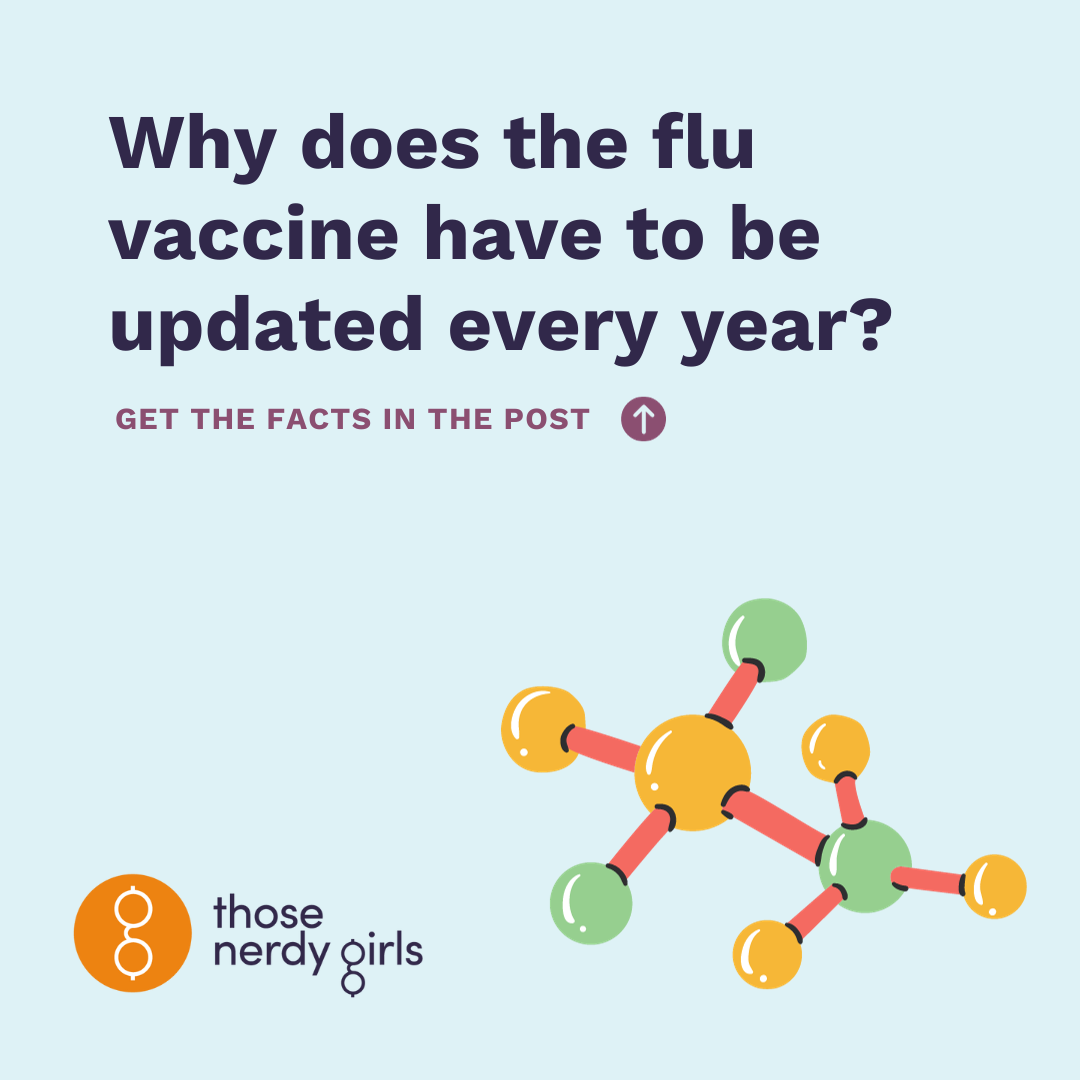Three reasons: 1. Influenza viruses mutate over time, 2. the virus strains circulating can vary year to year, and 3. our immunity wanes over time.
That’s why the flu vaccine formula needs to be updated yearly, and we need to get a flu shot each season to be well-protected.
Influenza viruses have proteins on their surface: hemagglutinin (HA) and neuraminidase (NA). The flu vaccine triggers our body to make antibodies against these proteins. If we get infected with the influenza virus, those antibodies can attach to the proteins on the surface of the virus and neutralize it.

Through a process known as “antigenic drift,” however, those surface proteins mutate over time. When this happens, antibodies generated by last year’s vaccine or infection become less effective against this year’s circulating influenza strains (levels of both also wane over time, making them less effective, even against similar strains).
Luckily, each year, 144 influenza surveillance centers across 114 countries (!!!) monitor which flu strains are circulating and whether any new strains have emerged. The World Health Organization then selects which influenza virus strains to include in the next year’s flu vaccine (once a year for the flu season in the Northern hemisphere and once a year for the Southern hemisphere). They take into consideration which of the circulating virus strains are making people the most sick, the extent to which they are spreading, how similar they are to the influenza strains targeted by the vaccine from the previous year, and the potential to offer cross-protection against multiple strains.
While there are four types of influenza viruses (A, B, C, and D), only influenza A and B viruses cause seasonal flu. Influenza A viruses are the only types to have caused global influenza pandemics. Influenza A virus is further classified into subtypes based on the combination of HA and NA proteins on the surface. This year, the flu vaccine is quadrivalent, meaning it is formulated to protect against 4 flu strains- an A(H1) virus, an A(H3) virus, a B/Yamagata lineage virus, and a B/Victoria lineage virus.
Each year, depending on how well the vaccine matches the strains of influenza circulating, flu vaccines are 40-60% effective at preventing illness. But even if you do still get the flu, getting the updated seasonal flu vaccine will reduce the severity of your illness. Indeed, preliminary data from the Southern Hemisphere suggest that this year’s vaccine reduced the risk of influenza-associated hospitalizations by 52%. The CDC estimates that between 2010 and 2020, flu caused between 140,000 and 710,000 hospitalizations each year, as well as 12,000–52,000 deaths. So reducing this risk matters. For those who don’t require hospitalization, the influenza virus can still knock you out for days with fever, cough, sore throat, runny/stuffy nose, body aches, etc.
Overall, reducing your risk of getting infected, developing severe disease, and getting hospitalized makes an updated flu shot well worth it. If you haven’t gotten a flu shot yet, do it!


